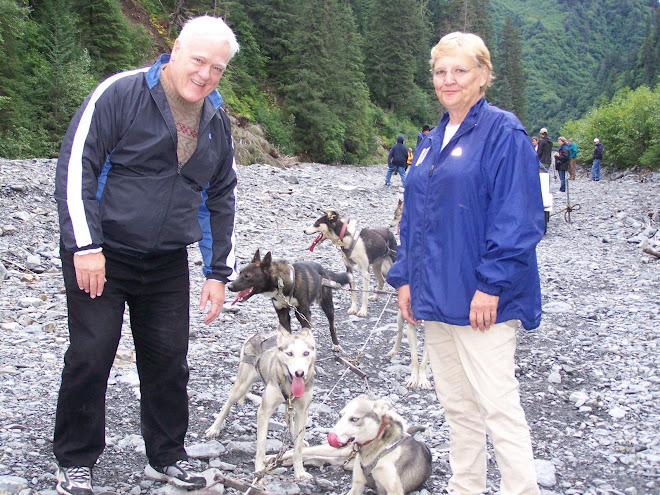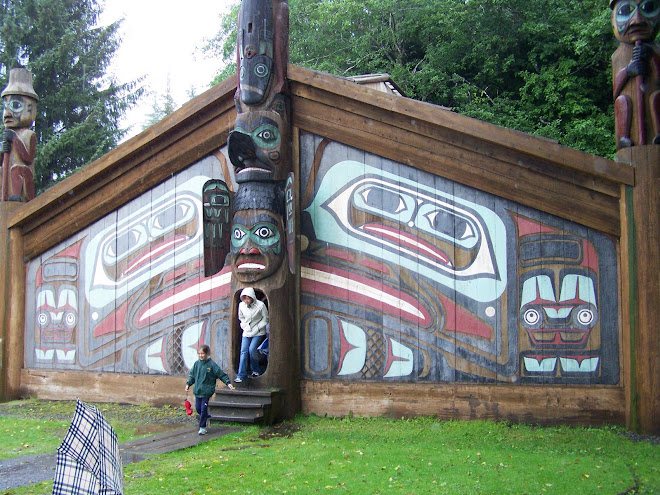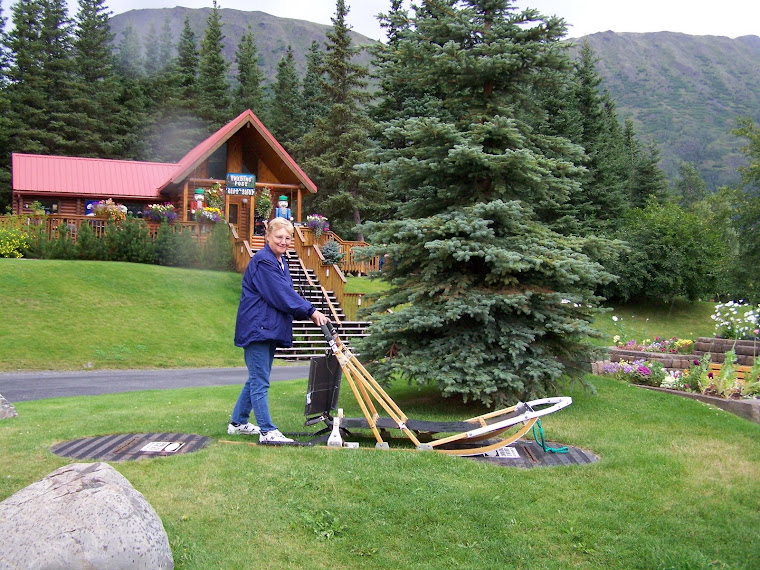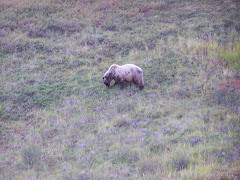
Right: Tlingit guide (Eagle Tribe) Joe Williams
This morning we docked in the coastal town of Ketchikan, the southernmost city in Alaska. It is located on a large island in Alaska’s inside passage. We were greeted by a steady rain which lasted all day, the first rainy day since we boarded our cruise ship (although we had plenty during the pre-cruise land portion of our trip). Ketchikan is one of the rainiest cities in Alaska; it rains on average two hundred and forty days a year-two days of every three. The winters are also comparatively mild, more like the Midwest Unites States.
With a population of thirteen thousand, Ketchikan is fairly large compared with other southeast Alaska towns. Like many other ports of call for our cruise ship, the immediate downtown area is chocked full of shops aimed at the cruise line tourists. It shares a gold rush era history with other inside passage towns such as Juneau and Skagway.
We took a tour of the town and some of the surrounding sights. We visited a salmon hatchery and a bald eagle rescue center, with two injured eagles in residence. Beside tourism, fishing for salmon and other salt water commercial catches is the lifeblood of the Ketchikan economy. The hatchery captures spawning salmon during their runs up the local river and manually strips eggs and milt. The eggs are fertilized in the hatchery, and the hatchlings are raised in tanks for a year and a half before being released in the tens of thousands back into the same river. The fish migrate down to the harbor and spend the next several years at sea feeding and growing. In four to six years they return to the harbor fully grown at fifteen to twenty-five pounds, and again enter the same river to spawn. All of this maintains local salmon stocks to support sport and commercial fishing. We were able to view the process at all levels, from channeling freshly arrived salmon into the hatchery, to releasing the partially grown hatchlings back into the river.
Ketchikan is the territory of Tlingit (ta-link’-it) native people. Our Indian guide explained the system of tribes (Eagle and Raven) and clans (bear, eagle, killer whale and thirty others). Most Tlingits are today fully assimilated Americans, but their interesting traditions are based on a matriarchal society where a child’s mother chooses their spouse, uncles raise boys and aunts girls instead of their own parents. Even today, they do not marry within their own tribes; an Eagle may not marry another Eagle. There is a strong movement among Tlingits to resurrect their culture, including teaching the native language in schools and performing traditional songs and dances. We were treated to some ceremonial songs accompanied by a traditional drum by our guide.
We visited a native cultural center and saw the intricate and imaginative totem poles for which the Tlingits are known. Some were over two hundred years old. We also saw a replica of the wooden lodge in which extended families lived together in earlier times. A traditional village would be a collection of these large lodges, each of which would be home to a specific clan, while all residents of that village would be of the same tribe.
This is our last Alaskan port of call. We sail at 6 pm this evening, and will be all day tomorrow, Thursday, at sea headed for Vancouver, BC where we will leave our floating home for good and fly home to Michigan.





No comments:
Post a Comment